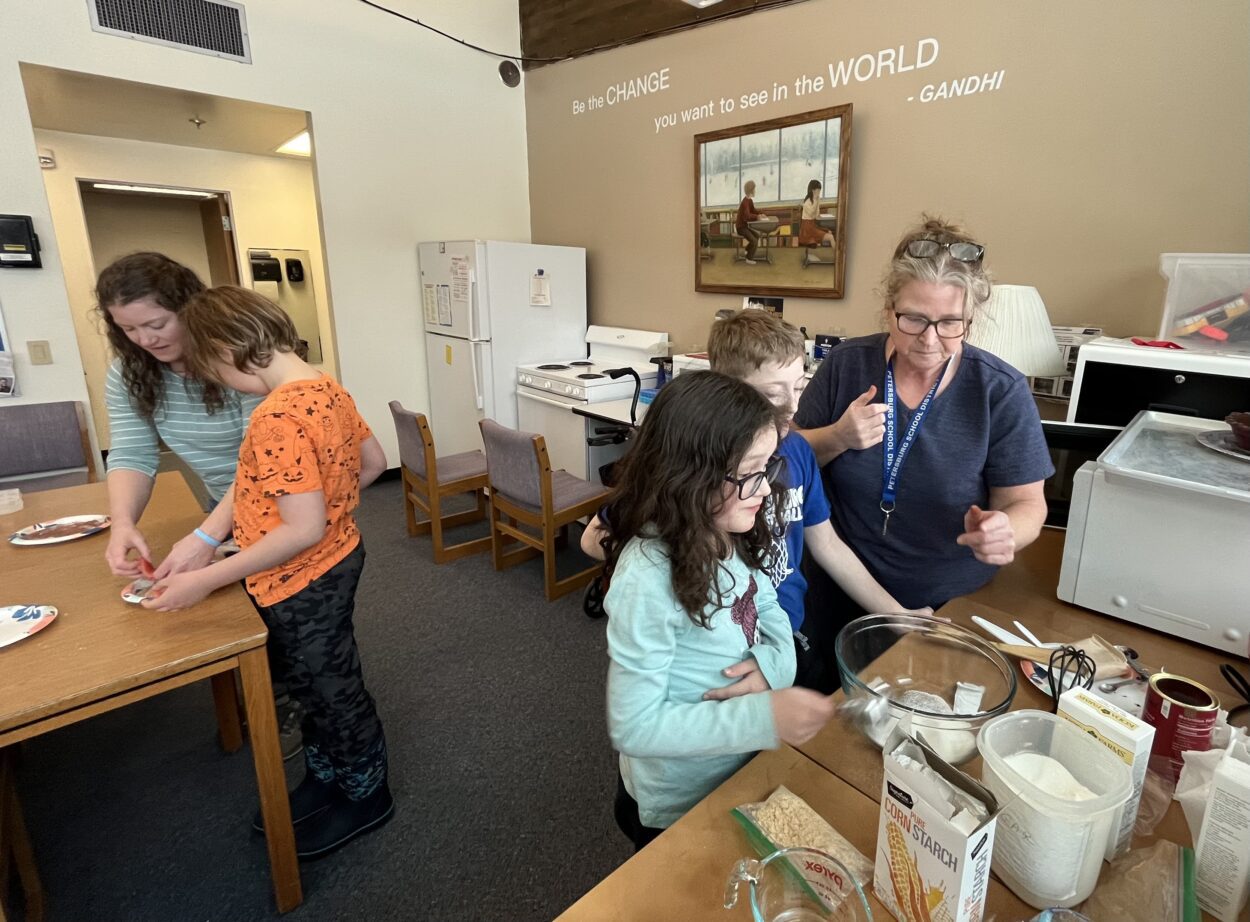
Every year Alaskan students compete to see who can remember the most granular details in a dozen books. The event, called Battle of the Books, is meant to promote a love of reading. KFSK’s Hannah Flor joined the Petersburg team last month as they celebrated the end of the season by cooking a special treat.
School is over for the day, but a few students at Petersburg’s Rae C. Stedman Elementary haven’t gone home.
Three of the four kids on Petersburg’s Battle of the Books team are here today, crowded around a counter in the teacher’s lounge. They’re making mochi, a chewy Japanese rice cake.
Thora Hess is the team’s youngest member. She’s deciding what flavor to make her batch of mochi.
“So I decided that I’m going to have cocoa, peanut butter, and strawberry inside,” she says. “Rolling it in cinnamon, sugar, and lemon.”
When they finish, they’re going to eat the mochi while they take a state-wide vote on next year’s Battle of the Books reading list.
Debi Tice is the Battle of the Books coach and elementary librarian. She said the mochi making was inspired by one of this year’s books.
“In that book, Jasmine wants nothing more than to pound the mochi with the men,” she said. “But one, she’s a girl, and two, she’s too young. She struggles all the way through the book, struggle, struggle, struggles, and in the end, they all make mochi together and it’s just this beautiful little lesson. And so in the back of the book, there is a recipe for mochi.”
The book was one of twelve that the teammates read for the competition. The Battle of the Books is all about knowing the little details in a book that most people don’t remember after a single read-through. So each teammate picked three books and became an absolute expert in those books, sometimes reading each book more than a dozen times.
The group worked together for nearly six months to get the details straight. Tice said the teammates really connected with each other over the books, and started to learn to listen to each other and trust each other.
“As young people, we learn to trust each other, to trust ourselves, and to also be very graceful, with others when they aren’t perfect,” she said. “And giving ourselves grace, when we don’t have it exactly. So there’s so much in it. It’s not just reading the book and knowing the answers.”
Battle of the Books has been around in different forms since the 1940s. In the early 80s, a school librarian introduced the competition in Alaska as a way to get kids excited about reading. Tice said that excitement can help kids really immerse themselves in a character’s world.
“Through reading, we can experience things without having to experience them ourselves,” she said. “And I think that just builds so much empathy.”
The team tied for 17th place, out of 33 teams in Alaska. Tice said that’s pretty impressive since this was the first Battle of the Books competition for all four team members. She said that she checked in with the kids early on, making sure they were up for the level of competitiveness.
“I said, ‘Okay listen, this is our first try. What if we get into the state competition and we don’t answer anything right?’ And one of them said, ‘That’s okay. We’re just learning. That’s okay. This is about the experience.’ And they all agreed. And that was beautiful to me that they were willing to put themselves out there and willing to take a risk, not knowing what the results would be,” she said.
Back at the teacher’s lounge, the kids are finishing up their mochi making.
The table is filled with different flavors of mochi, cut into bite-sized bites.
Thora Hess surveys all the different batches.
“Yeah,” she says, “everything looks tasty. But it’s in the flavor. Can’t rely on looks.”
For Hess, the texture creates some interesting associations.
“It’s like, grainy. Almost like a cat’s tongue, but softer.”
“How do you know what a cat’s tongue feels like?!” I ask her.
“I felt Poncho’s tongue. With my finger though!” she laughs.
Tice and the team settle in, plates full.
Now they just have to vote on next year’s books. Tice reads a synopsis of each book and has the kids rank them on a scale of one to five, five being the books they’re most interested in.
“Sarah is facing years in the juvenile detention system for hacking into the foster care computer system to prove that her foster parents are crooks. But then she gets a second chance when a mysterious man offers her a chance to join a group of M16 affiliated spies,” she reads.
Forth grader James Nilsen likes the sound of that. “Oh YEAHHH,” he says.
Thora Hess is into it too. “I’d give that a 1000!”
But 3rd grader Dirk Severson isn’t so sure. “It’s like a 300 page book…” he says glumly.










